‘Even Mogadishu is not safe’: A recent attack shows al-Shabab’s deadly power
A constellation of factors have converged to bolster the Islamist militant group in Somalia, writes Sudarsan Raghavan
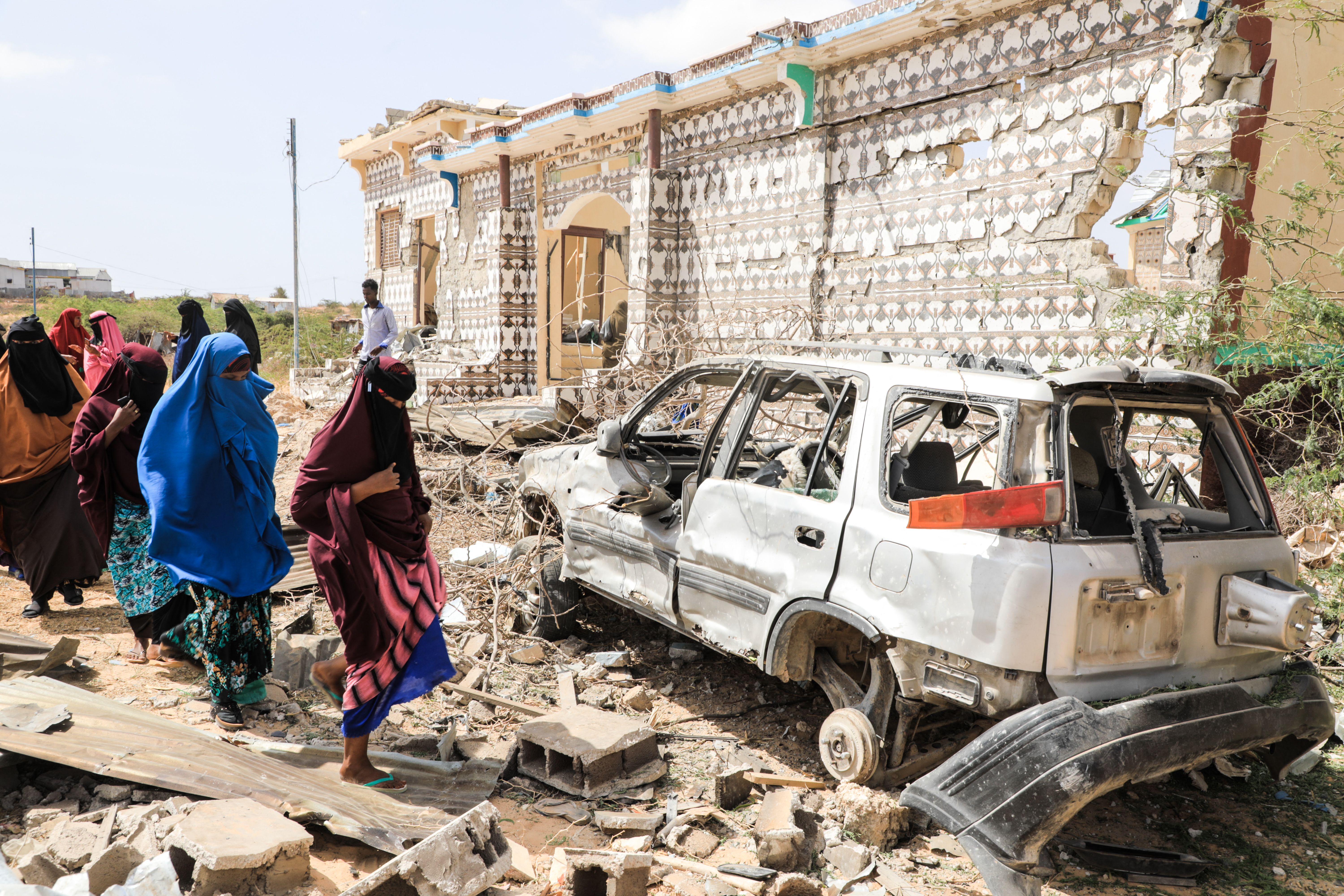
Your support helps us to tell the story
From reproductive rights to climate change to Big Tech, The Independent is on the ground when the story is developing. Whether it's investigating the financials of Elon Musk's pro-Trump PAC or producing our latest documentary, 'The A Word', which shines a light on the American women fighting for reproductive rights, we know how important it is to parse out the facts from the messaging.
At such a critical moment in US history, we need reporters on the ground. Your donation allows us to keep sending journalists to speak to both sides of the story.
The Independent is trusted by Americans across the entire political spectrum. And unlike many other quality news outlets, we choose not to lock Americans out of our reporting and analysis with paywalls. We believe quality journalism should be available to everyone, paid for by those who can afford it.
Your support makes all the difference.In the predawn hours, the militants of al-Shabab attacked the peacekeepers’ base from every direction with lethal precision.
Suicide bombers detonated three cars filled with explosives. Islamist fighters then pounded the facility with heavy gunfire and rocket-propelled grenades, killing several dozen African Union peacekeepers from Burundi. Footage posted on social media showed bodies in military uniforms scattered around the base.
“The Burundians were caught unaware,” said Sadaq Mokhtar Abdulle, a Somali Parliament member representing the village of El Baraf, where the base was located. “They were killed in cold blood. And the others fled.”
The 2 May assault claimed more than 50 lives, according to local officials and western security personnel in Somalia, making it the deadliest strike on the US-backed peacekeeping mission here in six years. Its success underscored the resurgence of al-Shabab and the challenges that African and American troops will face in containing the group.
Two weeks later, President Joe Biden approved the redeployment of some 450 American troops to Somalia – reversing a 2020 order by the Trump administration to end US counterterrorism operations in the country after more than a decade.
The militants now control roughly 70 per cent of south and central Somalia, a country nearly the size of Texas. While the fragile government rules Mogadishu and provincial capitals, al-Shabab and its 5,000 to 7,000 fighters oversee much of the countryside. In other areas, they use fear and mafia-like tactics to extort taxes while providing health, educational and judicial services in an effort to undermine the government and build loyalty.
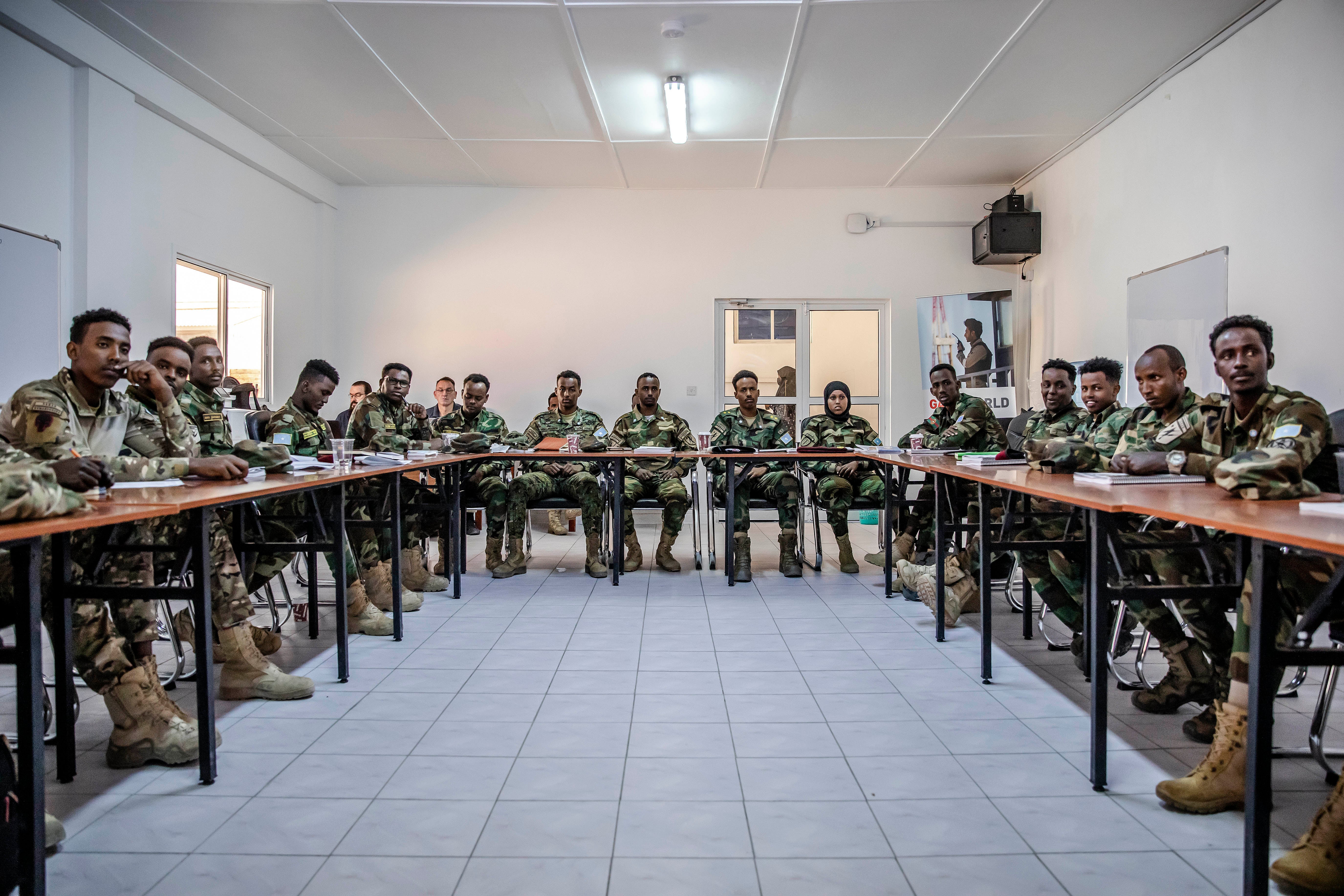
“We’ve seen an expansion of their territory,” said Samira Gaid, executive director of the Hiraal Institute, a think tank focusing on Somalia and the Horn of Africa. “We are seeing them be more audacious.”
The group’s attacks nearly doubled from 2015 to 2021, according to data compiled by the Africa Center for Strategic Studies in Washington. Last year, much of the violence involved confrontations with security forces. If the current pace continues through December, attacks will have increased another 71 per cent overall in only a year.
This surge coincides with a deadly sweep of violence across Africa by Islamist groups affiliated with al-Qaeda and the Islamic State. Both are seeking to revive their fortunes on the continent after the fall of the latter’s self-declared caliphate in Iraq and Syria and the weakening of al-Qaeda in Yemen and Afghanistan. Al-Shabab, which in Arabic means “the youth,” accounted for more than a third of all Islamist attacks in Africa in 2021.
Even as it remains a national insurgency, al-Shabab is searching for opportunities to push beyond Somalia’s borders and create a regional caliphate enforcing a strict interpretation of Islamic law
“Al-Shabab remains al-Qaeda’s largest, wealthiest and most deadly affiliate, responsible for the deaths of thousands of innocents, including Americans,” General Stephen J Townsend, head of the Pentagon’s US Africa Command, said in February during a visit to Mogadishu, the Somali capital.
A constellation of factors have converged to bolster it here. They include Somalia’s myriad political crises, the waning of American support last year, an ineffective African Union force, and the lack of a cohesive counterterrorism strategy among the Somali government and its partners. A struggling national army remains a work in progress, despite years of training by the US and other nations.
As US troops return to support Somali and African Union forces, they will face a militancy that is seeking to build up its financial coffers and its international jihadist credentials. Even as it remains a national insurgency, al-Shabab is searching for opportunities to push beyond Somalia’s borders and create a regional caliphate enforcing a strict interpretation of Islamic law.
“Al-Shabab’s lethal insurgency continues with no end in sight,” the International Crisis Group, a Brussels-based think tank, said in a report last month. “The group consistently stays a step ahead of local and regional military operations. Combined with dysfunction and division among their adversaries, the militants’ agility has allowed them to embed themselves in Somali society. It also makes them hard to defeat.”
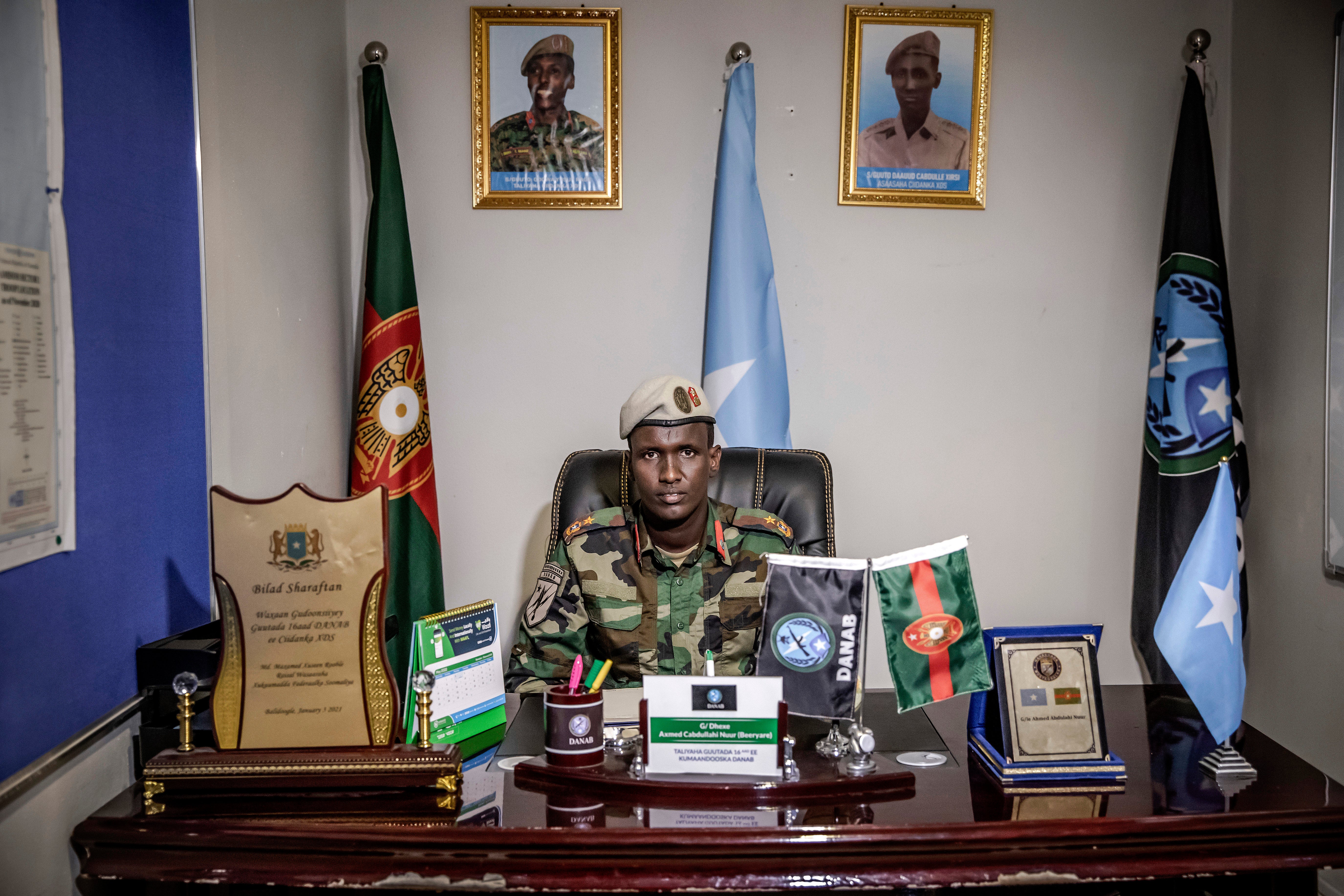
What unfolded at the African Union base helps reveal why. This article, which includes previously unreported details about the events at El Baraf, is based on interviews with local officials, a doctor who treated civilian victims’ wounds, Western security personnel with knowledge of the attack, and top officials in the African Union, Somali military, US government and the UN. The Washington Post also obtained internal text messages detailing the attacks as well as videos and photos that villagers or the militants posted afterwards on social media.
On that May morning, al-Shabab fighters seized control and planted their black flag at the base. They also seized artillery and other heavy weaponry, including a ZU 23mm, a Soviet-made antiaircraft gun, according to the western security personnel with knowledge of the attack.
In a matter of hours, the group had become stronger, flush with potent weapons to use against the government and its allies.
Little more than a decade ago, al-Shabab was on the defensive – on the verge of being pushed out of Mogadishu, with many of its leaders already dead from US airstrikes.
But the militants adapted and turned to guerrilla warfare. In 2010, the group orchestrated suicide bombings in the Ugandan capital of Kampala, targeting crowds watching the soccer World Cup final and killing 74 people. Three years later, it laid siege to a mall in Nairobi, leaving 67 dead.
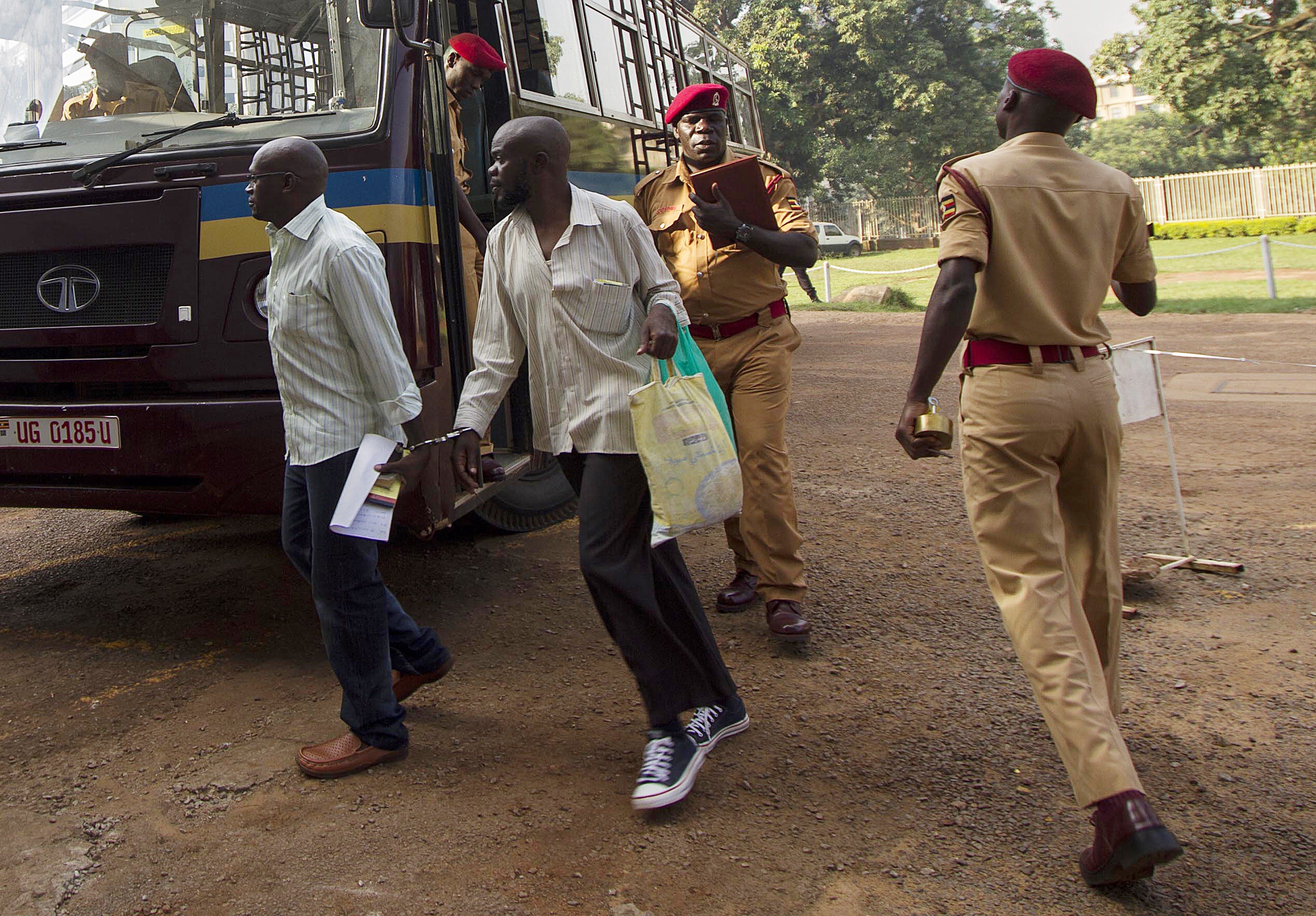
Inside Somalia, it continued to stage hundreds of attacks, many aimed at civilians. In 2017, two truck bombs in Mogadishu killed more than 500. In 2020, three American personnel died when al-Shabab targeted a military base used by US forces in Kenya.
During the past two years, UN, western and African Union officials say, the group has taken advantage of political crises surrounding delayed legislative and presidential elections.
“Intense political fighting to a dysfunctional level, at multiple levels of society, caused a lack of governing and attention to security,” said Larry André, the US ambassador to Somalia. “There were still some efforts, but in general they took their eyes off the prize and al-Shabab came back with a vengeance.”
President Donald Trump’s decision to withdraw most US forces to a base in Djibouti stymied efforts to tackle the insurgency. It meant troops had to “commute” to Somalia for short-term training missions. US strikes against the group, which had intensified under Trump, slowed dramatically during the first year of the Biden administration, according to data from the US Africa Command.
These days al-Shabab’s “tax base” includes all kinds of businesses, hotels, real estate developments, construction sites and even the port in Mogadishu. At the same time, it has set up schools, clinics and police departments in areas it controls. It also deploys mobile courts, where its judges resolve land and family disputes, further undermining the government’s authority.
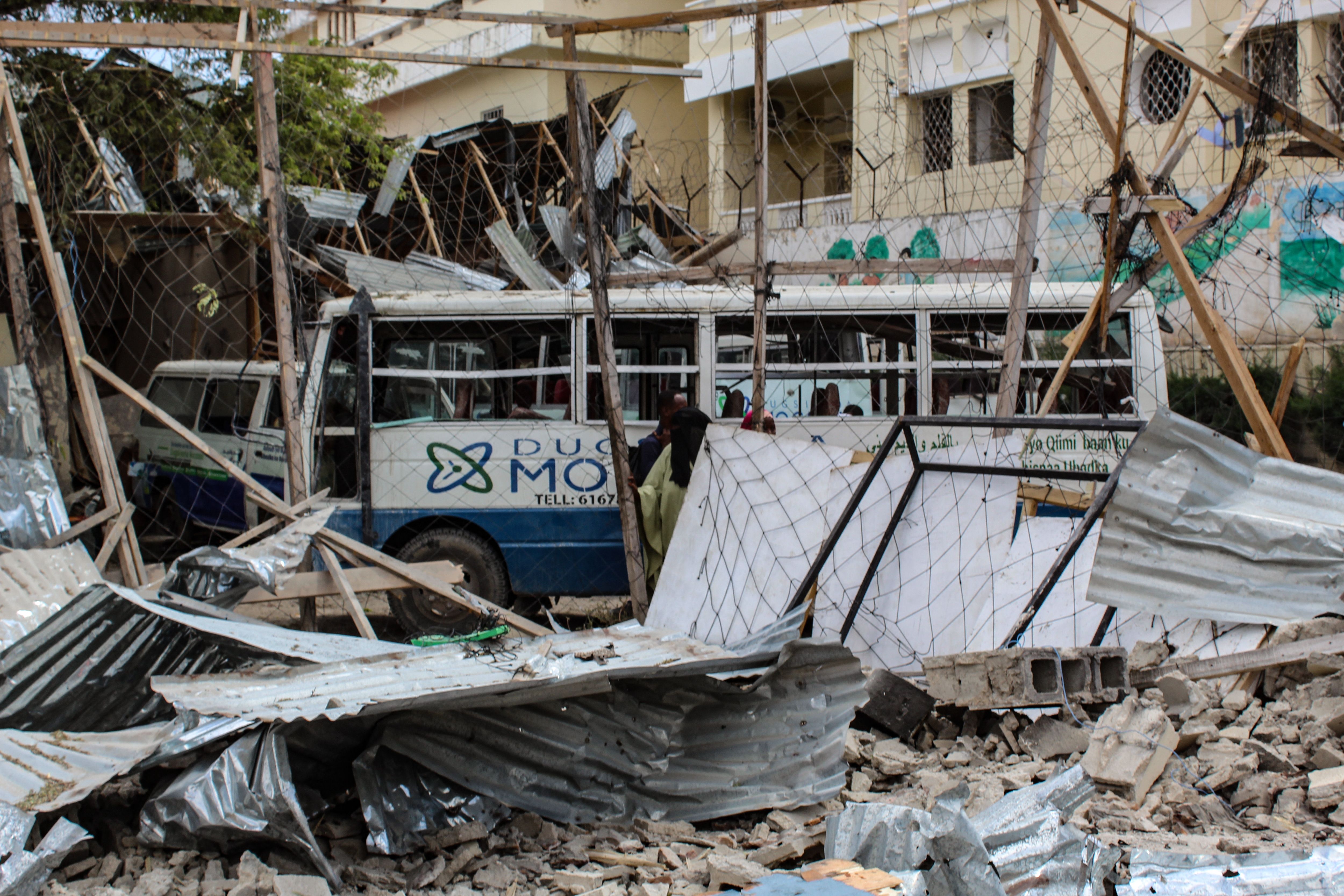
“We cohabitate with al-Shabab,” said Isse Mohamed Halane, a top official at the Somali Chamber of Commerce and Industry. “Wherever they are ruling, it’s known we have to abide by their rules. Some people like the way they deal. They prefer them when it comes to the justice system. Other people, they complain.”
Despite the threats of bombings and assassinations, life in the capital appears normal, at least on the surface. Streets and markets are bustling. Lido Beach is crowded daily with people sunbathing or meeting friends in cafes overlooking the ocean.
But the landscape remains dangerous, especially for anyone who speaks out against the militants or appears close to westerners and other foreigners. Many lawmakers stay or hold meetings inside a fortified enclave by the airport known as the Green Zone.
“The places I can go as a member of parliament are limited,” said Mohamed Moalimu, a lawmaker who has survived five assassination attempts, including one outside his home in January. He now lives in a heavily secured hotel in front of the airport. “It means that even Mogadishu is not safe.”
Nine other civilians remain missing and are presumed dead. Officials suspect they were taken away by al-Shabab and executed as collaborators
In El Baraf, the Burundian peacekeepers never made real connections with residents. Aside from occasional patrols, local officials said, the soldiers mostly stayed inside the sprawling base surrounded by sand-filled barriers. They were so isolated that food and supplies were flown in from Mogadishu, about 85 miles to the south. Al-Shabab had planted roadside bombs along routes into the village.
“They were inside the base in defensive positions,” said Abdulle, the village’s representative in Parliament. “They didn’t engage al-Shabab very much.”
Other local officials and lawmakers, as well as US-trained commanders, echo that. They contend that the African Union has no will or appetite to wage operations against the militants – despite having more than 19,000 peacekeepers – and prefers to keep its troops safe on bases.
But Fiona Lortan, a senior African Union official in Mogadishu, defended the mission in an interview last month. The Burundian peacekeepers had no Somali military in El Baraf to help them build close ties to the locals and gain intelligence on al-Shabab, she said. Nor did they have the funds, the weaponry or the numerical strength to actively go after the militants.
Even so, government forces in the area had far less. They totalled about 900 soldiers and 600 mostly unarmed policemen and were responsible for a region with a population of 1.6 million.
“Despite over a decade of training, we still haven’t reached a point where we have sufficient Somali forces to be able to take control,” Lortan said. The mission “can only succeed if the government is a viable partner ... This has been the missing link.”
The Somali government did not respond to repeated requests for comment about these issues or its army’s preparedness.
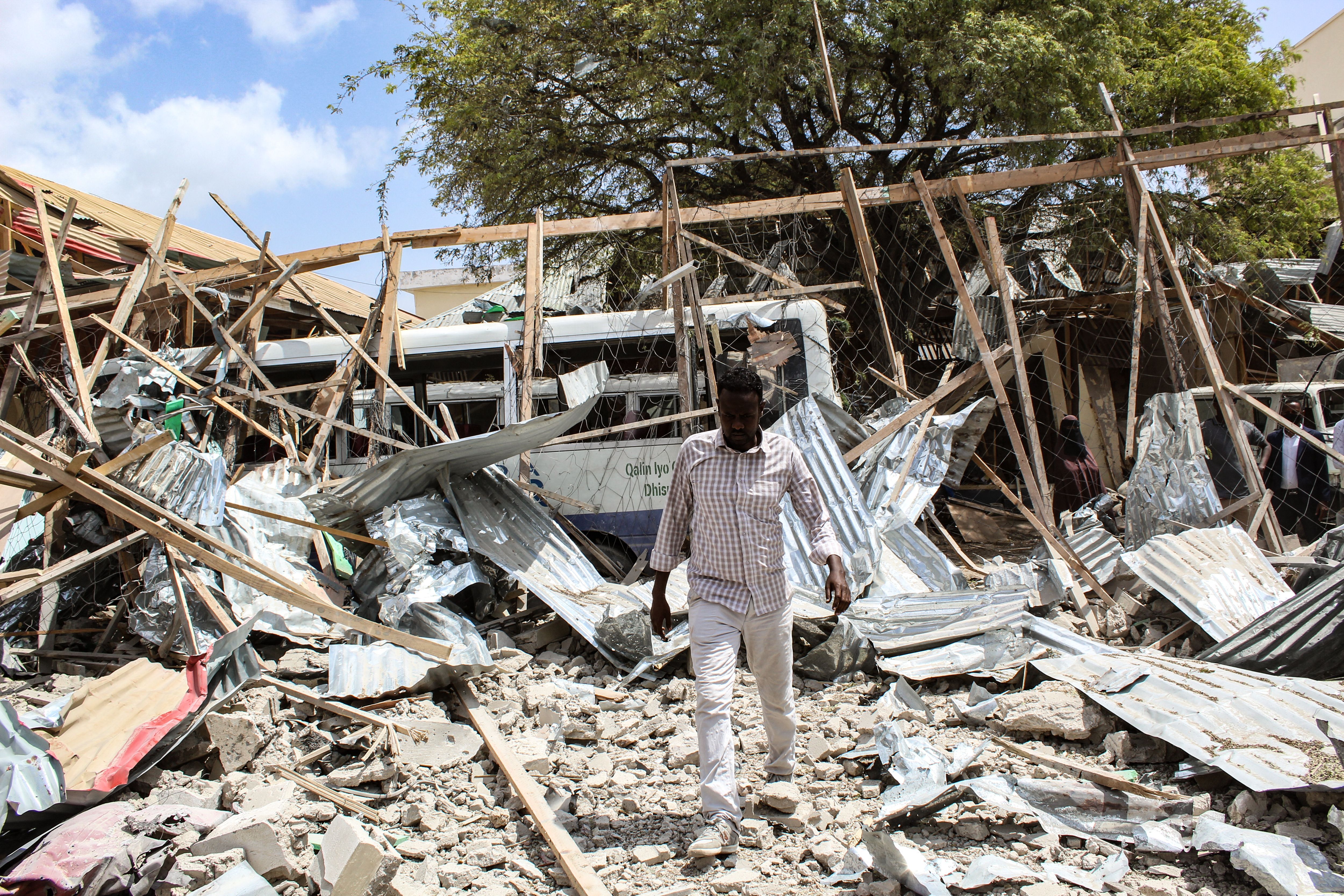
With little protection, many residents lived in fear of al-Shabab. That allowed the militants to mobilise their fighters in villages around the base for several days before the attack, Abdulle said.
No residents alerted the peacekeepers.
The militants detonated at least three vehicles simultaneously at different points along the perimeter of the base, recounted Lortan. Then hundreds of militants attacked from every direction. The peacekeepers’ leaders were among those killed, she added, describing the attack as “psychologically very traumatic.”
“There was pandemonium everywhere,” she said. “People were basically running for their lives.”
The Somali army sent no reinforcements, she said. She acknowledged that the militants made off with heavy weaponry but said African Union forces, aided by Pentagon-hired American contractors, destroyed some in helicopter counterstrikes.
“We were terrified they would put on Burundian uniforms and infiltrate bases,” she said.
Six civilians died, Ahmed said, and 13 were wounded in the crossfire. According to a doctor who treated the casualties, their injuries were caused by bullets and bomb shrapnel.
Nine other civilians remain missing and are presumed dead. Officials suspect they were taken away by al-Shabab and executed as collaborators.
Scores of villagers, whom the peacekeepers ostensibly were there to help protect, ran onto the base and looted gasoline, food and other items, as seen in the images on social media. The videos and photos show al-Shabab’s flag fluttering over the base and its fighters using the victory to further recruitment.
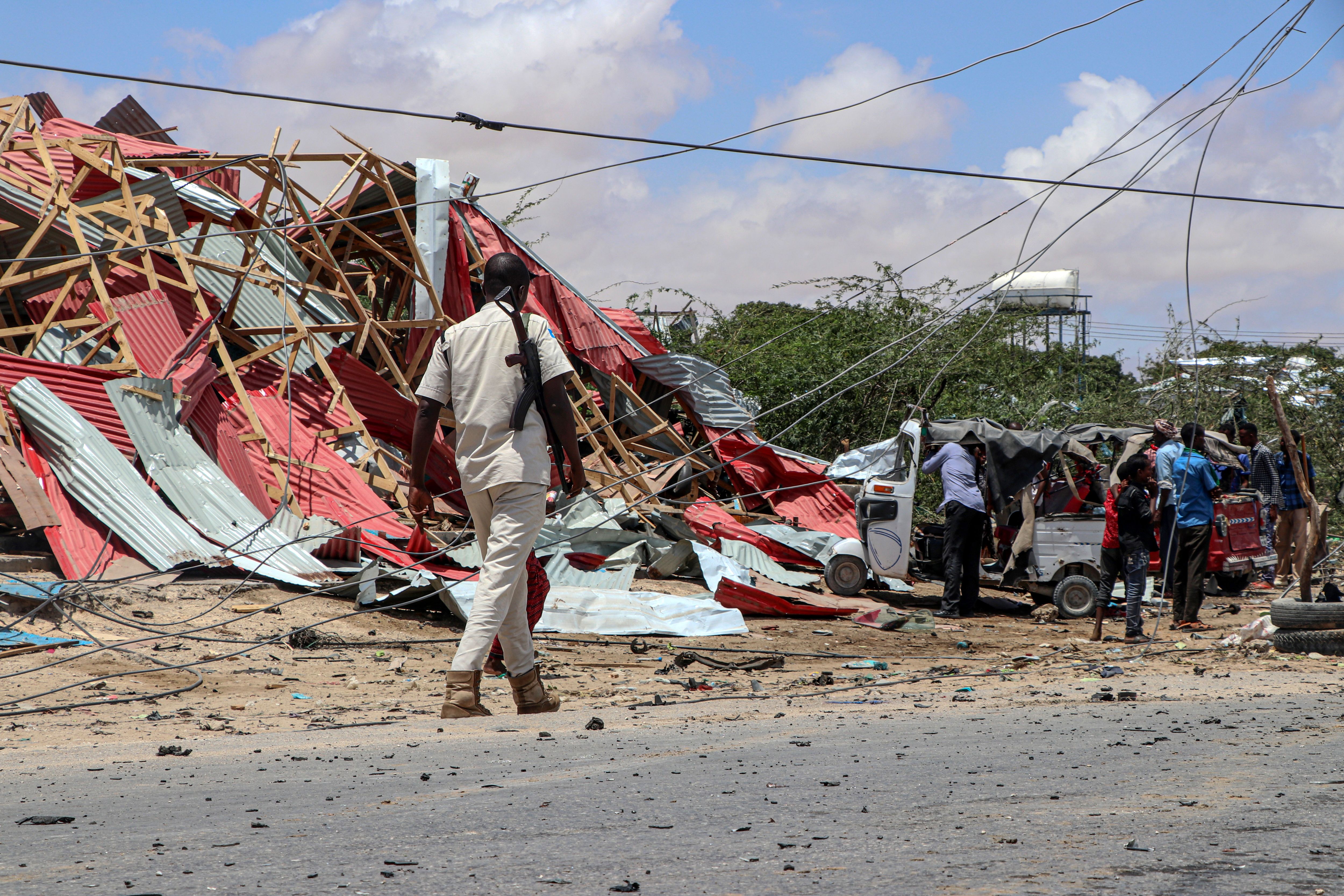
Inside a nondescript military facility near the airport last month, two dozen Somali soldiers went through an hours-long training session led by the US Special Operations Command. All were part of the Danab, an elite force of 1,600 fighters.
Their instructor discussed how to use information warfare to counter al-Shabab’s grip on the population – a key reason it was able to overrun the base. At one point, Jay asked for examples of how the militants influenced villagers.
“They steal the aid and pretend they are the providers of that aid,” one Somali commander said.
“They try to gain the trust of the people by telling them they brought the aid,” another said.
“If we know this is their tactic, what can we do to counter that?” replied Jay, who asked that he be identified only by his first name because of security protocols.
“We need to plant some military intelligence inside al-Shabab,” a third commander suggested.
“Can we just tell the truth about what’s happening?” Jay said. “Can we tell the population that we marked the aid in a way that it’s difficult to change it, that it’s sent by the government?”
Many in the training nodded.
The announcement of the Americans’ return coincided with the election in May of a new Somali president, Hassan Sheikh Mohamud. He had previously governed the country from 2012 to 2017, the period when al-Shabab was on the decline. US and Western officials hope his government can stop the militants’ momentum.
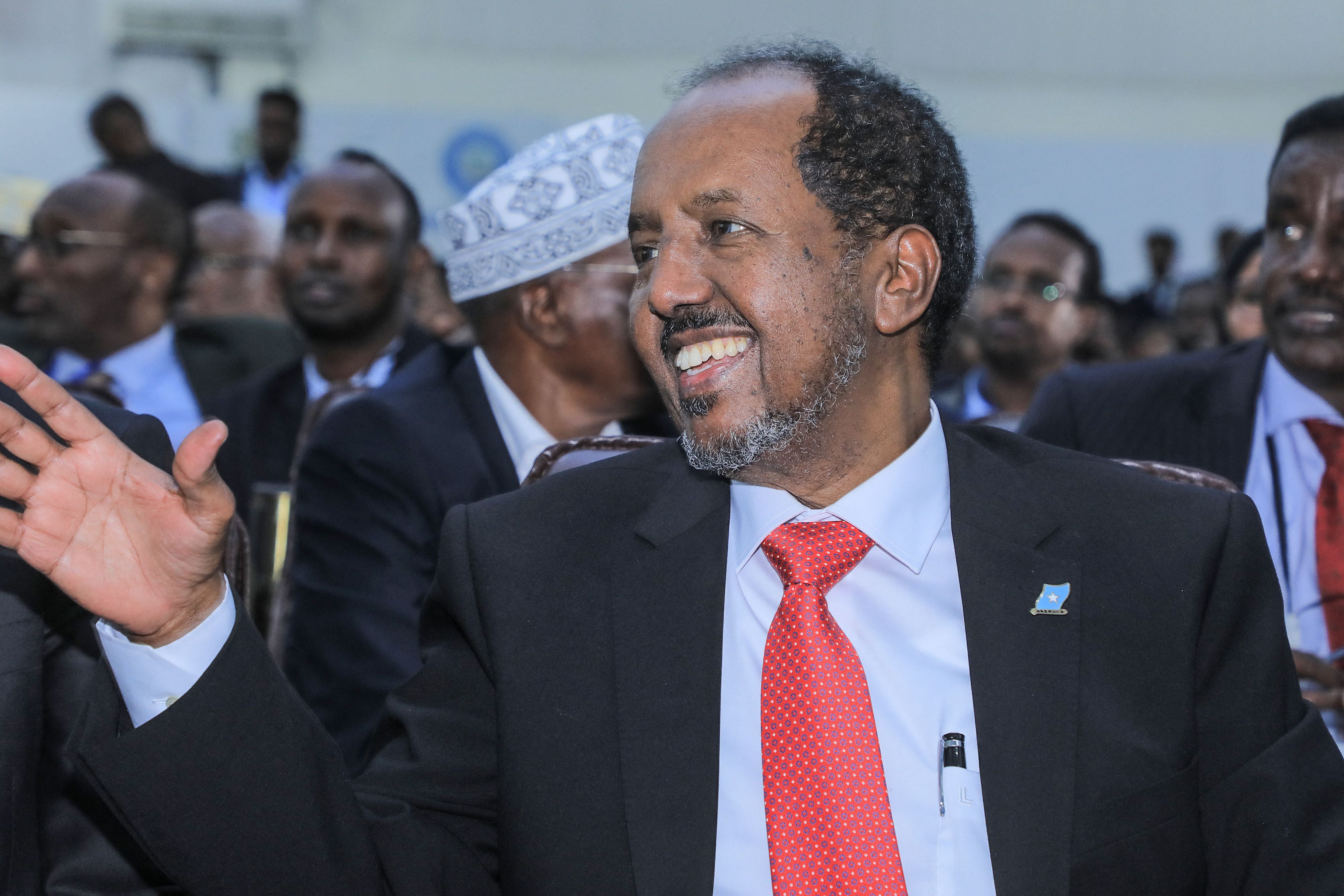
The Danab – the name translates in Somali to “lightning” – insists it knows al-Shabab well and will now be able to defeat it. “We are not afraid of al-Shabab,” Lt Col Ahmed Abdullahi Nuur, the Danab’s top commander said in an interview. “We take the fight to them before they launch their attacks.”
With the Americans back in place, “we’re expecting more training and more operations,” Nuur continued. “We’re expecting more airstrikes on al-Shabab. We want to fight shoulder-by-shoulder with the Americans, like we did before.”
But with the insurgency stretching into its 15th year, many analysts are convinced that the militants cannot be defeated militarily. The International Crisis Group urged in its report that Somalia’s leaders engage in political talks to end the conflict.
The African Union mission is separately winding down. Its funding is running out; a departure date has been set for 2024. Yet Lortan said the government “is not in a position to take over in 2024” if the Somali army remains unprepared and militants continue to dominate much of the country’s terrain.
“We don’t have control on the ground. You can’t fight a war from the air,” she said. “This is one of the things that makes al-Shabab so deadly. It makes it very difficult for us and the Somali forces.”
“Don’t ever underestimate the sophistication of al-Shabab,” she added.
Two months after the attack on the base, African Union helicopters are still travelling back and forth to El Baraf to recover the remains of the peacekeepers. Before the militants left, they planted explosives on some corpses.
“Not all have been recovered,” Lorton said. “Possibly some may never be recovered. They have been blown up into bits and pieces.”
© The Washington Post




Join our commenting forum
Join thought-provoking conversations, follow other Independent readers and see their replies
Comments